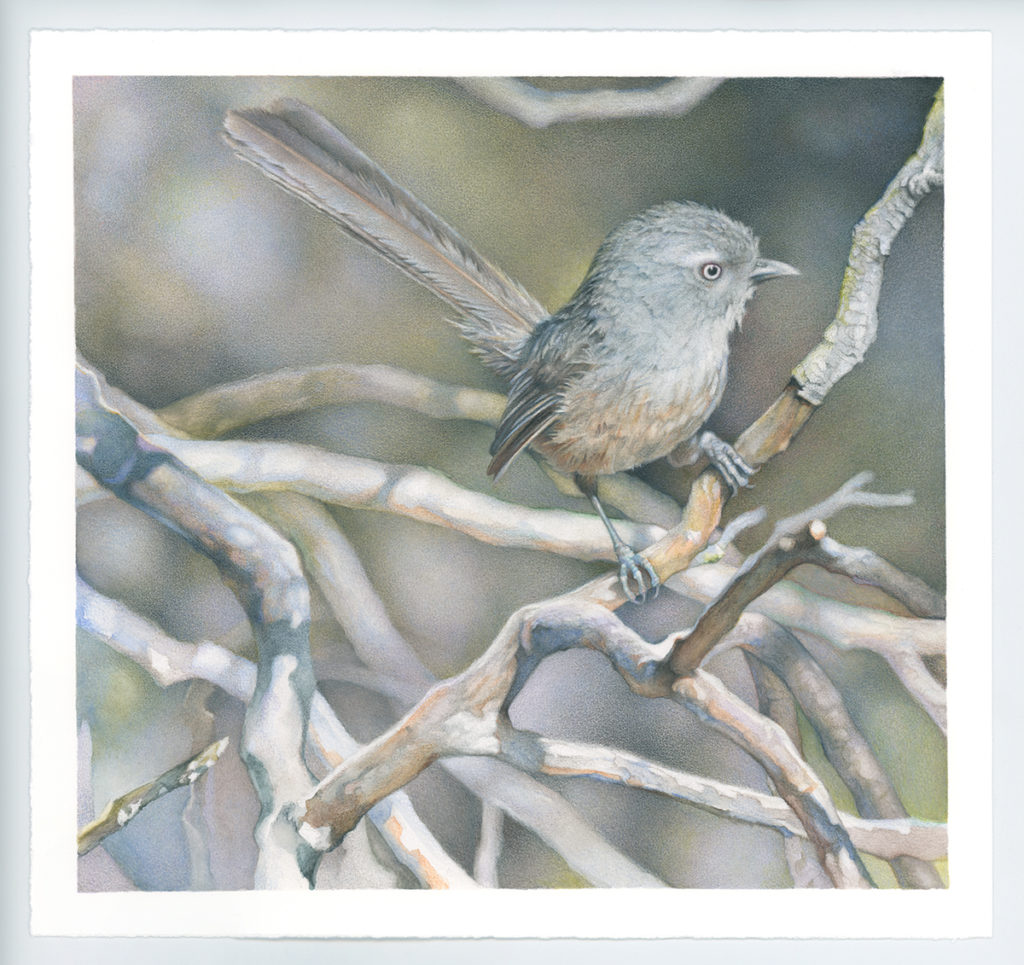350 yards from my house there is a trailhead that descends into one of my favorite places in the world. Eaton Canyon lies at the foot of the San Gabriel mountains, located on a northeast edge of Los Angeles, and it is not just my local canyon and my favorite birding patch, it is also my childhood canyon. It is a place full of memories and magic. Since March of 2020, however, I have been unable to enjoy the simple pleasure of grabbing my binoculars and walking out the door to head down to check on the chaparral birds there, despite my being thoroughly grounded here due to the pandemic. The canyon is so close, but remains mostly closed today, accessible only through a limited and complex reservation system. One is now required to drive to its farther entrance, go through security, and stay only three hours.
350 yards is only slightly less than the territorial range of one of North America’s most unique birds, the Wrentit. The only representative in the New World of an Old World radiation, the Wrentit is currently believed to be most closely related to the parrotbills of Asia, though old world warblers and Asiatic babblers have previously been considered. Nothing is close to it here though. It is a strange little bird. With a lifelong home territory of about .62 hectares (that’s about 1.5 acres), and juveniles leaving home to settle a whopping 400m on average from their natal grounds, they were once described as the most sedentary bird species in North America. I can relate.

Though my house is within territorial striking distance, and though my property hosts some pretty nifty chaparral bird species, I will never see a Wrentit in my yard. They need what is in the canyon, not what grows in established pseudo-feral suburban gardens, even ones like ours where we are working to establish native plants. One of their favorite tangles to reside in, and whose fleshy drupes sustain them through winter when there are fewer fruits, insects, and spiders to glean, is poison oak. Maybe someday. This year, I can hear them as I walk my dog near the canyon in the afternoons, but I never see them. Their simple bouncing ball of a song has many practical uses in their lives, and has very few variations, but it is certainly loud. Both sexes sing. It is the first bird song I learned as a child.
Last week I scored a reservation to hike in the canyon. It’s not quite time yet for Wrentits to breed, but they sing year long, stay monogamous (even roosting together in little family fluff mounds), and can be in the same general territory for up to 12 years. I’m sure the average is much lower than that, but still. It has only been a little over a year since I last saw them there. I headed straight to where I had last seen them, at the edge of the wash, and was startled by a loud song almost immediately. There really aren’t the hordes of people in the canyon any more to inure them to us, and I had provoked one into giving a territorial proclamation. As I slowly turned around I saw two of them looking at me from the edge of a large toyon, with their characteristic fierce gaze (they have disconcertingly white irises, ringed with a blood maroon outer iris). The same presumed pair I had seen over a year ago, they were no longer concerned with me, and dropped into a very mature poison oak patch, skulking and gobbling up seeds as they went along, exactly as they are supposed to.
References:
Allen, Larry W., Kimball L. Garrett, and Mark C. Wimer. 2016. Los Angeles County Breeding Bird Atlas. Los Angeles Audubon Society, Los Angeles, CA.
Johnson, N.K. (1972c). Origin and differentiation of the avifauna of the Channel Islands, CA. Condor 74: 295-315
Erickson, M.M. (1938). Territory, annual cycle, and numbers in a population of wren-tits (Chamaea fasciata). University of California publ. Zool. 42:247-334.
Geupel, G.R. and G. Ballard (2020). Wrentit (Chamaea fasciata), Version 1.0 in Birds of the World (P.G. Rodewald, Editor). Cornell Lab of Ornithology, Ithaca, NY, USA.
https://doi.org/10.2173/bow.wrenti.01
About Post Author
Visits on this Page:2574